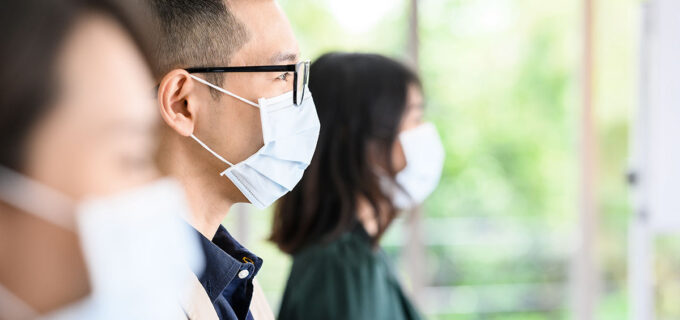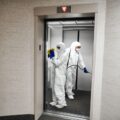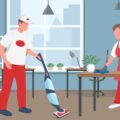As Singapore’s reinfection rate or ‘R number’ for Covid-19 continues to fall well below 1, we will see more and more businesses and institutions returning to what will become our ‘new normal’ in the post-COVID era. In particular, the way we occupy and utilise buildings will be substantially changed, and in particular, the way in which we keep them clean and hygienic. For those with responsibility for keeping buildings safe and infection-free during this challenging period in our history, here are a few protocols to assist:

Step One: Preparation Work
- Carefully Study and Apply all the Relevant Guidelines: Below are some of the local NEA as well as the U.S. Environmental Protection Agency (EPA) and U.S. Centers for Disease Control and Prevention (CDC) protocols:
- NEA Protocols
- General cleaning and disinfecting
- Guidance for cleaning and disinfecting public spaces, workplaces, businesses, schools and homes
- Interim guidance for businesses and employers to plan and respond to coronavirus disease 2019 (COVID-19)
- Schools, daycare centers, offices or other facility that do not house people overnight
- Institutions of higher education
- Building Inspection: A thorough and detailed inspection of the building should be made with all observations being documented for future reference and action. Where buildings have remained unoccupied or only partially used for many months and regular janitorial work may have been suspended, there is a much higher likelihood that mould growth may have proliferated in some areas where the Relative Humidity might be elevated such as washrooms, laundry facilities, kitchens or within HVAC equipment. If mould is detected, even in small patches, it needs to be noted and dealt with immediately as it can quickly get out of hand and accelerate exponentially into a full-blown building wide colonisation.
- Prepare Budgetary Estimates and Approvals and Implement Procurement: Ensure that all budgetary and procurement hurdles have been identified and overcome so that procurement of consultants, manpower, equipment, tools and chemicals can be expedited without unnecessary delays.
Step 2: Update Internal Standard Operating Procedures and Protocols
In these difficult, challenging and particularly hazardous times, there is an even more compelling need than ever to articulate and deploy rigorous janitorial Standard Operating Procedures and Protocols (SOPP’s) to ensure that everything that should be done, gets done, every time, without exception or deviation. Listed below are the fundamental elements of an efficient and effective cleaning, sanitation and disinfection programme:
- A Clear, Concise Housekeeping Policy: Janitorial policies need to be extremely clear and describe precisely what needs doing, by whom and how often. These policies should define the housekeeper’s training schedules, certification and ongoing evaluation. They should also set regular review dates to ensure that the policies are always current.
- Detailed Daily, Weekly and Monthly Routines: A robust janitorial programme is comprised of very detailed protocols where every step of every task is unequivocally defined and described so that there is no room for deviation or misinterpretation.
- Each cleaning procedure should determine precisely what surfaces should be cleaned, sanitised and disinfected as well as specifying what methods and chemicals should be used, by who, how often and who is responsible for supervising each area and certifying that everything has been done in accordance with the protocols under their jurisdiction. Compliance must be assured by clear lines of accountability and responsibility.
- The protocols should also contain simple, clear and concise instructions for the use of chemicals including their dilution rates, contact times as well as the specific use of tools, materials and personal protective equipment.
- Personal hygiene standards should also be included such as hand washing and sanitising should be included.
- Additionally, clear guidance should be given on infection control and how to avoid cross-contamination by the utilisation of dedicated materials, tools and equipment in specific areas; these protocols are usually augmented with clearly defined colour coding.
- Operating protocols must be updated whenever a new task, chemical or procedure is to be introduced. Accordingly, all corresponding training schedules should be amended to reflect the changes.
- Outbreak Contingency Planning: It is essential that your plans include preparedness for the worst possible of outcomes, an outbreak of CoVid 19 within your building and among staff. This policy should be a stand-alone emergency response document that is well understood and rehearsed in order that it can be deployed seamlessly at a moment’s notice. It should include information on the virus, its transmission, reporting symptoms, testing, self-isolation. It should also be abundantly clear on the immediate NEA and other Government agency notification process detailing emergency numbers and procedures. As a contingency, an emergency facility shut down and staff isolation procedure should part of the core content.

Step 3: Train, Deploy, Observe, Re-evaluate and Refine
Once the first two steps have been completed it is time to ensure that each and every member of the janitorial team and their supervisors are thoroughly trained on all aspects of the new policies. Once the training, evaluation and certification of the staff have been completed, it is then time to deploy and carefully observe if the protocols are actually achieving the desired outcomes. The essential steps to achieving this are listed below:
- Engage, Educate, Train and Certify Staff: The first task is to engage all janitorial staff and ensure that they all understand the changes and revisions that are about to make. They need to be re-educated on the new emerging aspects of infection control, cleaning, sanitation, disinfection and the emergency contingency plans for outbreak response. Once the education has been completed, it is time for training, evaluation and certification.
- Deploy, Observe, Re-train and Re-deploy: The process of training, observation and re-training should become circular in action. Engage the janitorial staff in conversation and ascertain what (in their opinion) is working well and what is not. Wherever necessary, undertake re-training and re-certification until the policies are being uniformly followed, without exception across the entire workforce.
- Identify Policy Errors, Gaps and Shortfalls: It is almost inevitable that a set of new policies that have been created in response to a new phenomenon such as the CoVid 19 virus will be 100% fit for purpose in their first iteration. It is therefore essential to proactively search for errors, gaps and shortfalls in the policies and then correct them. Of course, as the policies are continuously refined and evolve; the corresponding communication, re-training and re-certification process needs to evolve hand-in-hand to ensure that what is written in the policies is reflected by actions in the workplace.
Cleaning
- Introduce and maintain advanced cleaning and disinfection standards, such as routine cleaning and disinfecting of high-touch spaces and surfaces per health authority guidelines
- Perform advanced cleaning and disinfection of workspace
- Sanitize all workspace areas, including offices, conference rooms, breakrooms, cafeterias, restrooms, and other areas
- Review shifts to optimize janitorial service performed to meet the needs of the facility
- Ensure adequate stock of paper and plastic products exists (toilet paper, paper towels, etc.)
- Provide tissues, no-touch trash cans, hand soap, alcohol-based hand sanitizer and wipes containing at least 60 percent alcohol, disinfectants, and disposable towels for workers to clean their work surfaces
- Provide additional hand sanitizer, surface disinfectant wipes and tissue available in workspace, cafeterias, break rooms, elevator lobbies and high traffic areas and other common areas




